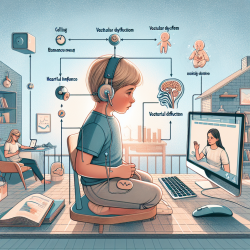As practitioners dedicated to enhancing the lives of children through effective therapeutic interventions, it is crucial to stay informed about the latest research. One such study, "Postural Sway Velocity of Deaf Children with and without Vestibular Dysfunction," offers significant insights that can guide our practice and encourage further investigation.
Understanding Postural Sway in Deaf Children
The study evaluated and compared the postural sway velocity between children with normal hearing and those with sensorineural hearing loss (SNHL), both with and without vestibular dysfunction. Using a force platform, the researchers assessed the center of pressure (COP) sway velocity in various standing positions, with eyes open and closed. The results indicated that children with SNHL demonstrated greater postural sway velocity compared to their normal-hearing peers, with even higher instability in those with vestibular dysfunction.
Key Findings
- Children with SNHL showed greater postural sway velocity in all positions evaluated, indicating higher instability.
- Those with SNHL and vestibular dysfunction exhibited the highest postural sway velocities, highlighting significant balance issues.
- Visual and somatosensory systems were found to be critical compensatory mechanisms for these children.
Implications for Practice
These findings underscore the importance of comprehensive assessments for children with SNHL, including evaluations of vestibular function. Practitioners should consider the following actions:
- Implementing Balance and Vestibular Rehabilitation: Integrate specific balance exercises and vestibular rehabilitation programs to improve postural stability in children with SNHL.
- Utilizing Visual and Somatosensory Cues: Encourage activities that enhance the use of visual and somatosensory inputs to compensate for vestibular deficits.
- Regular Monitoring and Assessment: Conduct regular assessments of postural control and vestibular function to tailor interventions effectively.
Encouraging Further Research
The study also highlights the need for further research to explore the long-term effects of vestibular rehabilitation and the potential benefits of incorporating auditory inputs into postural stability programs. By investigating these areas, we can develop more targeted and effective interventions for children with SNHL.
To read the original research paper, please follow this link: Postural Sway Velocity of Deaf Children with and without Vestibular Dysfunction.










